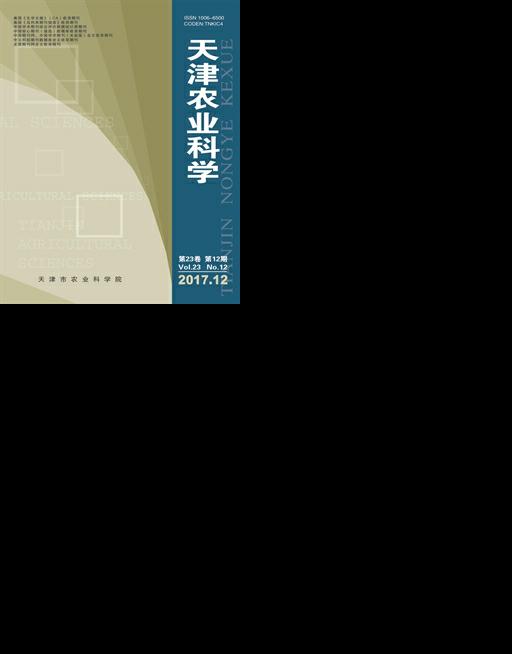个体化翻译视角下《道德经》英译本译者性别与语言特征研究
2018-01-09王汐
【摘要】据近年来系统功能语言学的新研究热点——个体化层级,可从语言使用者层面提供一种新的系统功能视阈下的翻译研究视角。译者性别是个体化翻译的重要因素之一。本文以词汇密度和语法难度作为判断译本特征的指标,从词汇、句法和语气三个层面探究译者性别对《道德经》英译本语言特征的影响。
【关键词】个体化《道德经》英译本译者性别词汇密度语法难度
基金项目:本研究为陕西省教育厅重点科学研究计划(哲学社会科学重点研究基地)“系统功能视阈下的个体化翻译模型——以典籍《道德经》英译为例”(项目编号:17JZ060)、教育部人文社会科学研究青年基金项目“系统功能视域下典籍复译的语际再实例化模型研究——以《道德经》英译为个案”(项目编号:17YJC740088)的阶段性成果。
《道德经》作为世界典籍翻译排行榜上仅次于《圣经》的第二大源语文本,深受西方读者的关注,现已有超过130个英译本(辛红娟,2008),据其译本时间可划分为三个翻译高峰期。20世纪60年代的女权主义运动使得社会性别得到空前关注。《道德经》第三次翻译高峰(1972—2004年)以第一部女性参与翻译的、由冯家富和英格里希合译的《老子〈道德经〉新译》为开端。此后又出现了女性译者独立完成的译本,如Ellen Marie Chen(1989)、Ursula K. Le Guin(1997)、Lee Sun Chen Org(2000)和ChaoHsiu Chen(2004)等。个体化层级是系统功能语言学的新研究热点,据此提出了个体化翻译研究视角,而译者性别是个体化翻译的重要因素之一(王汐、杨炳钧,2015)。本文依据个体化翻译,以词汇密度和语法难度作为判断译本特征的指标,从词汇、句法和语气三个层面考察译者性别对《道德经》英译本语言特征的影响,并总结男性译本和女性译本所呈现的特征。
译者性别与语言特征
本研究选取六个《道德经》英译本:三个女性译本(Chen,1989;Guin,1997;Chen,2004)和三个男性译本(He et al.,1985;Mair,1990;Gu,1995),从词汇、句法和语气三个层面对比和分析,探究译者性别对译本语言特征的影响。
1.词汇选择
例(1):故能长生(第七章)
对“长生”的翻译,女性译者选择动词词组,如“last long”(Chen,1989),“go on and on”(Guin),“live for ever”(Chen,2004);男性译者选择名词或名词词组,如“longevity”(He et al.),“long-lived”(Mair),“eternal life”(Gu)。
例(2):居善地(第八章)
对“居”和“地”的翻译,女性译者选取了较为口语化的名词和动词,如“dwelling”“land”(Chen,1989),“house”“earth”(Guin),“settle”“ground”(Chen,2004);男性译者Mair选用较为书面化的词汇“abode”“location”,He et al.和Gu采取了意译的翻译方法,将其译为“lowness”和“low place...as water”。对“善”的翻译,女性译者选择较为生动的形容词“good”“quiet”;男性译者选用较为抽象的名词“quality”“goodness”。
例(3):其事好还(第三十章)
在翻译“还”时,女性译者将其翻译为较为口语化的词汇“returning(huan)”(Chen,1989),“backfires”(Guin)和“return”(Chen,2004);男性译者则选择更为书面化的“requital”(He et al.)“boomerang”(Mair)和“retaliatory”(Gu)。
例(4):民之饥(第七十五章)
对“饥”的翻译,女性译者选取形容词和动词,如“starving”和“hungry”;男性譯者选用名词,如“famine”和“hunger”。
韩礼德(1985)在探讨书面语文本和口语文本的复杂性时,提出了“词汇密度”和“句法难度”两个概念。词汇密度是每个小句中实义词的数量,句法难度指每个小句复合体中小句的数量。口语文本和书面语文本的复杂度所呈现的方式是不同的,前者具有相对较高的句法难度而具有相对较低的词汇密度,后者恰恰相反,具有相对较高的词汇密度和相对较低的句法难度。这是因为书面语文本更倾向于名物化,而口语文本在句法上更加的多变。例(1)—例(4)的句法难度均为1,表1显示了4个例子原文本和各译本的词汇密度。
从表1中可看出在句法难度相同的情况下,女性译本的词汇密度低于男性译本。因此,女性译本更加接近于口语文本,而男性译本更加接近于书面语文本。具体表现在:(1)女性译者倾向于使用具体而形象的动词和形容词,男性译者更多使用抽象的名词;(2)女性译者倾向于使用口语化词汇,男性译者更多使用书面语词汇。
2.句法选择
例(5):事善能,动善时。(第八章)
Chen(1989):Projects are carried out by good talents,activities are good in timing.
Guin(1997):The good of work is skill,and of action,timing.
Chen(2004):It adapts to all necessities./It moves at the right moment.endprint
He et al.(1985):He is competent in deeds,/He is timely in action.
Mair(1990):The quality of an enterprise depends on ability,the quality of movement depends on timing.
Gu(1995):He does a thing as properly as water,/He takes action as timely as water.
在翻譯小句复合体时,所有男性译者都采用了排比句式,如“he is...in...,he is...in...”“the quality of...depends on...,the quality of...depends on...”“he...as...as...,he...as...as...”,以保持形式统一;女性译者并未使用排比结构,而是选择更为随意的句式。
例(6):生之畜之,生而不有,长而不宰。(第十章)
Chen(1989):To give birth yet not to claim possession(yu),/To act(wei)yet not to hold on to,/To grow(chang)yet not to lord over(tsai).
Guin(1997):To bear and not own,/to act and not lay claim,/to lead and not to rule.
Chen(2004):Can one give life and grow life and yet claim no possession?/Can one supervise and benefit others,yet exercise no authority and rely on no pride?
He et al.(1985):To beget all things,but not to take possession of them,/To advance them,/but not to take credit for doing so,/To be leader but not master of them.
Mair(1990):It gives birth to them and nurtures them,/It gives birth to them but does not possess them,/It rears them but does not control them.
Gu(1995):Giving all things life and propagation/Without claiming to be their owner,/Benefiting them without claiming to be their benefactor,And being their head without ruling them.
在翻译小句复合体时,女性译者(除了Chen,2004)都使用了较为简洁的表达,省略参与者(Participant)而只用过程(Process);男性译者均选择完整的表达方式,将参与者、过程,甚至环境成分都译出,如He et al.“To advance(过程)them(参与者), but not to take(过程)credit(参与者)for doing so(环境成分)”。
例(7):知其白,守其黑,为天下式。(第二十八章)
Chen(1989):To know(chih)the white(pe),/But to abide(shou)by the black(heh),/Is to be the model(shih)of the world.
Guin(1997):Knowing light,/and staying dark,/be a pattern to the world.
Chen(2004):Recognize the white - the yang,/guard the black - the yin./Be a model under Heaven.
He et al.(1985):He who knows the white(glory)but keeps to the black(obscure),is ready to be the(divination)instrument of under Heaven.
Mair(1990):Know whiteness,/Maintain blackness,/and be a model for all under heaven.
Gu(1995):Though knowing what is honor,/You are ready to play the role of the disgraced/And content to be a valley in the world.
同样,女性译者以相对简单的句式翻译小句复合体,均采用“过程+参与者”的结构(如“know the white”“staying dark”)和并列逻辑关系;而男性译者选用较为复杂的句式,如He et al.使用包含并列小句复合体的内嵌小句,Gu使用并列和从属两类逻辑关系的小句复合体。
表2为例(5)—例(7)词汇密度和语法难度的数据,数据显示女性译本的词汇密度平均值均低于男性译本,女性译本的语法难度均等于或高于男性译本。因此,男性译本在风格上更接近书面文本,女性译本更接近口语文本,具体体现在:(1)女性译者倾向于使用简单句和并列关系小句复合体,男性译者倾向于使用复合句,如内嵌句和从属关系小句复合体;(2)女性译者倾向于使用更为简洁的表达,以核心过程进行翻译,省略不必要的功能成分,男性译者倾向于使用更为完整的结构,包含参与者和环境成分;(3)女性译者在句式形式上较为随意,男性译者倾向于使用形式上更为一致的排比句式。endprint

3.语气选择
例(8):故常无欲,以观其妙;常有欲,以观其徼。(第一章)
Chen(1989):Therefore,by the Everlasting(chang)Non-Being(wu),/We desire(yü)to observe(kuan)its hidden mystery(miao);/By the Everlasting(chang)Being(yu),/We desire(yü)to observe the manifestations(chiao).
Guin(1997):So the unwanting soul sees whats hidden,/ and the ever-wanting soul sees only what it wants.
Chen(2004):Observe the mysteries of the Tao without longing./Survey its appearance with desire.
He et al.(1985):Therefore,the subtleties of Tao are always apprehended through their formlessness,/The limits of things are always seen through their form.
Mair(1990):Always be without desire in order to observe its wondrous subtleties;/Always have desire so that you may observe its manifestations.
Gu(1995):Hence one should gain an insight into the beginning of the Tao by constantly observing the Nothingness,And should perceive the end of the Tao by constantly observing the Being.
Chen(1989)譯本采用第一人称代词复数“we”,不仅促成译者的身份定位,还邀请目标语读者进行相似的自我定位,以结盟读者;Guin选择两个相反的表达“unwanting soul”和“ever-wanting soul”作为主语,清晰而主观地将人分为两类,使读者不由地考虑自己属于哪一类;Gu选择“one”和高值情态动词“should”表达强烈的义务,疏远了读者,使读者产生说教感;Chen(2004)和Mair选择了祈使句,在语气上比陈述句更为强烈,另外,Mair选择“always”在语气上比Chen(2004)强烈;He et al.选择被动语态,更为客观。
例(9):信不足焉,有不信焉。(第十七章)
Chen(1989):When you dont trust(hsin)[the people] enough,/Then they are untrustworthy(puhsin).
Guin(1997):To give no trust is to get no trust.
Chen(2004):If they do not rule the country with faith,the people will not respond to them with trust.
He et al.(1985):Only when one is not faithworthy,will faithless events take place!
Mair(1990):When the rulers trust is wanting,there will be no trust in him.
Gu(1995):The lack of faith on the part of the ruler,Leads to the lack of confidence in him on the part of the people.
Chen(1989)选择第二人称“you”,语气更加柔和,译者尝试与目标语读者进行对话,拉近了译者与读者之间的距离,从而结盟读者;Guin在两个内嵌小句中选择使用非限定小句“to give no trust”和“to get no trust”,省略语气系统中的主语(Subject)和定式成分(Finite),省略及物系统中的施事(Agent),使得指代模糊化,纳入了读者;He et al.用不定代词“one”作泛指,同样纳入了读者;Mair和Gu使用第三人称“the ruler”,作为旁观者,更加客观。
从例(10)可看出Chen(2004)译本在语气上更接近男性译本,更为强烈和客观。这可能是因为她本身性格更偏向男性,也可能是她为了在性别不平等社会中更容易发表自己的作品而作出的妥协。
例(10):奈何万乘之主,而以身轻天下?(第二十六章)
Chen(1989):How could the Lord of ten thousand chariots,/Conduct himself lightly in the world?
Guin(1997):How can a lord of ten thousand chariots let his own person weigh less in the balance than his land?endprint
Chen(2004):Unfortunately the great ruler of ten thousand chariots governs the country indiscreetly.
He et al.(1985):How is it that a lord of ten thousand chariots belittles his own importance under Heaven?
Mair(1990):How then should a king with ten thousand chariots conduct himself lightly before all under heaven?
Gu(1995):Why should a ruler of ten thousand chariots/ Take reckless action to govern the empire.
原文在语气上是特殊疑问句,Chen(2004)将其译为陈述句,在语气上比原文弱。从情态动词上看,语气强弱顺序为“could(Chen,1989) 男女译者在语气选择上的区别在于:(1)男性倾向于使用更为强烈的语气,从一定程度上无意识地疏远了读者,女性译者语气更为温和,更好地结盟读者;(2)男性譯者在主语和情态操作语的使用上更为客观,而女性则更为主观。 结语 译者性别作为个体化翻译中一个重要因素,在《道德经》英译中体现在词汇、句法和语气的选择上。词汇选择方面,女性译者倾向于使用具体的动词、形容词和较为口语化的词汇,男性译者倾向于使用抽象的名词和较为书面化的词汇;句法选择方面,女性译者倾向于使用简单句、省略结构和较为随意的句式,男性译者倾向于使用复合句、完整结构以及排比句式;语气选择方面,女性译者更为柔和和主观,男性译者更为强烈和客观。 参考文献: [1]Chen,C.H.,Tao te ching cards:Lao Tzus classic Taoist text in 81 cards(New York:Marlowe,2004). [2]Chen,E.M.,The Tao Te Ching(New York:Paragon House,1989). [3]Gu,Z.K.,Lao Zi,The Book of Tao and Teh(Beijing:Peking University Press,1995). [4]Guin,U.K.L.,Lao Tzu Tao Te Ching(Boston & London:Shambhala,1997). [5]He,G.H.et al.,The Book of Lao Zi(Beijing:Foreign Languages Press,1993). [6]Mair,V.H.,Tao Te Ching(New York:Bantam Books,1990). [7]Halliday,M.A.K.,Spoken and Written Language(Victoria,Australia:Deakin University,1985). [8]王汐、杨炳钧:《系统功能视阈下的个体化翻译——以〈道德经〉英译为例》,《翻译季刊》2015年第77期,第26-48页。 [9]辛红娟、高圣兵:《追寻老子的踪迹——〈道德经〉英语译本的历时描述》,《南京农业大学学报》(社会科学版)2008年第1期,第79-84页。 [10]辛红娟:《〈道德经〉英译文本的另类阐释》,《中国外语》2011年第2期,第93-97页。 作者单位:西安外国语大学外国语言学及应用语言学研究中心/英文学院陕西西安
